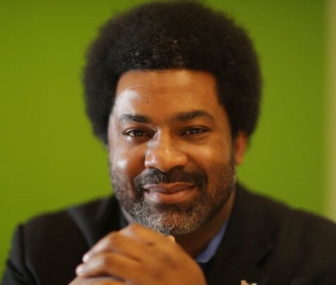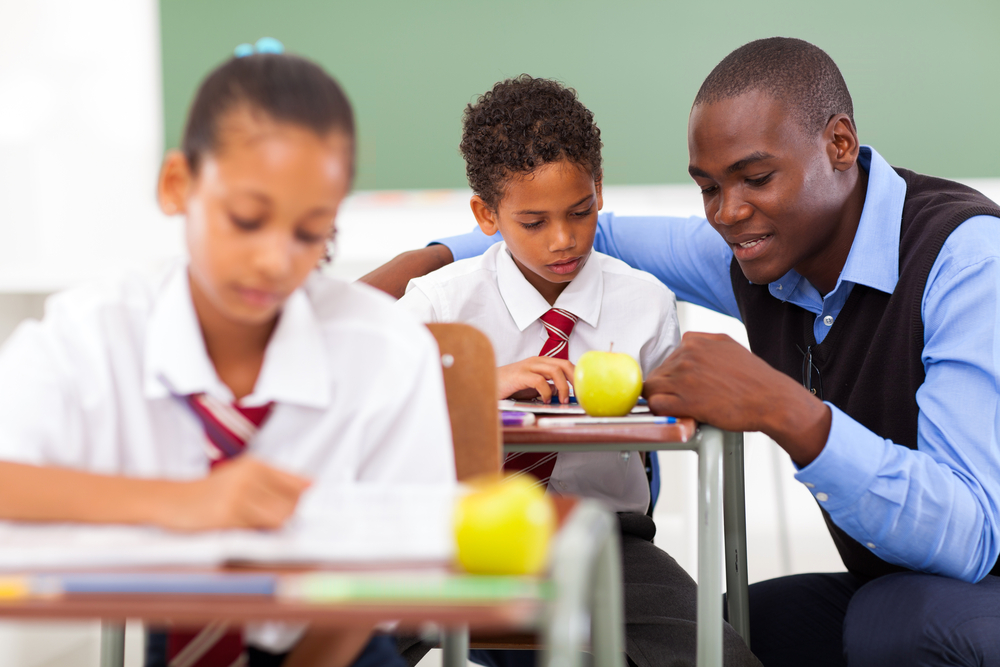![]() I discovered my purpose when I was 21 years old, and the man I’d tackled during a pick-up football game shot me three times in my legs. He was upset that I’d tackled him so hard.
I discovered my purpose when I was 21 years old, and the man I’d tackled during a pick-up football game shot me three times in my legs. He was upset that I’d tackled him so hard.
That moment, more than 20 years ago, was pivotal. It made me want, profoundly, to understand my fellow player’s extraordinary anger and, perhaps, that of other Black and brown kids whose life circumstances had pushed them down the wrong path and into schools, jails and courtrooms where their well-being, protection, progress and future often isn’t a priority.
Early in my career, I’d accepted a job at a youth study center in Philadelphia. But I didn’t make it past the orientation. Pretty quickly, I got the distinct feeling that too many of that center’s staff had already given up on the very kids we’d been hired to help. It’s pretty damning when social workers, counselors and other employees, and society at large, seem only to be concerned with doing damage control, but make way too little effort to help those children correct-course. And that depressed me.
Today, a disproportionate number of Black and brown students are caught in systems that do not educate or rehabilitate them. Too often, we punish them for their failure to even learn to read when, sometimes, the adults charged with teaching them have fallen far short of fulfilling their assigned duties, work they’re paid to do.
Sometimes, including in schools, we merely pretend to care. We come up with woeful, short-sighted, short-term non-solutions that are more smoke-and-mirrors than meaningful, corrective action. We fill that vacuum with more vapid stuff: What Black hero will we celebrate this week? What building can we rename to honor an honorable Black? What statue of some great American racist can we remove from a public square?
We create inefficacious diversity and affinity committees that have enough power to schedule and host a meeting but have neither the budget nor real desire to implement real change. We’ve not deeply excavated the race-driven roots of the problem nor been willing to call a system that is stacked against too many Black and brown kids an inherently racist system.
An academic achievement gap persists
A 2018 study found that the overall high school dropout rate in America was 5.3%. While the rate for white students was 4.2%, it was 6.4% for Black students and 8% for Hispanic students. Additionally, 6.2% of male students but 4.4% of female students dropped out.
Dropouts over-populate juvenile detention centers and courts. The Philadelphia Juvenile Court Judges’ Commission’s 2019 annual report found that 21.2% of criminally charged young people who’d circulated through that court had gone no further than the ninth grade. The man who shot me 20 years ago had dropped out in seventh grade. If schools themselves also shaped his poor academic performance, which has rippling effects on a child’s life and future, how? Why?
We need a racially balance teacher workforce
According to the IZA Institute of Labor Economics, if a poor Black boy has at least one Black male teacher in his middle school years, his risk of dropping out decreases 39%. (And, yes, Black males are under-represented as college education majors.) Yet, in Philadelphia, where Blacks comprise 44% and whites 34% of the population, whites make up 67% and Blacks 24.5% of the teacher workforce in public schools. When too many students do not see themselves reflected in their teachers, that’s problematic.

Sharif D. El Mekki
So is the reality that, based on where they come from, some students simply don’t have sufficient resources for learning when they are in school. Our society emphasizes the importance of learning for kids, but are we equipping them with all they need to succeed, regardless of their ZIP code?
The actual achievement gap should be based, not just on how well students apply themselves, but on adults’ capacity and determination to teach children. It sometimes appears easier to disregard certain children, labeling them as troublemakers or delinquents, instead of confronting deficiencies among some educators. Bad, uncaring teachers riddle the school-to-prison pipeline.
Not resolving that issue makes all of us complicit. It makes us a main reason the system remains broken. We must provide students with teachers, principals, counselors and mentors who not only look like them but understand the racial and class privilege that has benefitted legions of white students more often than non-white students.
The Canadian government, for one, has acknowledged the role of race and racism in keeping certain persons ahead of the game and others behind. It has adopted an anti-racism strategy aimed at helping to stop systematic discrimination. The U.S. government must move in a similar direction if this nation is to live out its liberty-and justice-for-all creed.
Abuse-ridden juvenile detention centers have closed -- and rightly so
In Pennsylvania, several juvenile justice centers have been closed amid seemingly growing public awareness of abuses that persisted in those places for years. A Delaware County judge ordered one center to be shuttered because he deemed horrific claims of physical, psychological and sexual abuse to be credible.
A couple of years ago, Pennsylvania’s Glen Mills, which was what I and others aptly refer to as a juvenile injustice center, also was shuttered. Mind you, we knew back in the late 1980s when I was a high school student, that Glen Mills was not a place for the healing, care and rehabilitation of children. Our Black and brown peers had been locked up there. They told us what they had endured.
For more information on Racial-Ethnic Fairness, go to
► JJIE Resource Hub | Racial-Ethnic Fairness
Has the public truly been unaware of those abuses? Or are juvenile injustice centers not worthy of monitoring precisely because they are overflowing with Black, brown and poor throwaway human beings?
Attorney Michael Coard, a personal friend, once told me he doesn’t go to court expecting to get justice; he goes to expose the injustices that many Black children, in particular, often confront, including in their schools and in courtrooms.
We need more people like that lawyer. We need education and justice system professionals who love children, who are more concerned with nurturing our young than merely cashing a paycheck to do damage control among our troubled, yet promising, young people.
Failing schools and juvenile correctional facilities that do not help a child course-correct toward becoming a thriving individual and productive citizen must be dismantled from the inside and from the outside. That’s how we invest in young people like that furious, confused, hurting pick-up football player I tackled all those years ago. It’s how we vitally invest in ourselves.
Sharif El-Mekki has been a principal and educator for 26 years. He is the founder and CEO of the Center for Black Educator Development.
